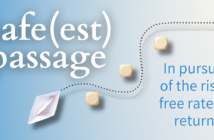How is the commercial real estate industry using technology and how is it benefiting borrowers?
The commercial real estate industry continues to recalibrate toward a more normal environment but must still navigate the ebb and flow of the pandemic. As a result, practitioners are approaching investment choices with a renewed focus on efficiency, better decision-making, controlling operating margins, and realistic financial outcome, and they’re looking to technology to lead the way. We’ve already seen advanced technology become mainstream in the form of the electric vehicle, blockchain, digital tokens, and cryptocurrency, and now there is an influx of capital investing in commercial real estate-related sectors that historically have been slow to innovate.
THE POWER OF DATA
One of the main reasons commercial real estate has lagged behind other industries in pursuing technology is because the risk-reward of every real estate deal is unique. The high cost and amount of resources needed to develop technology that could overcome this lack of standardization have been an obstacle. In recent years, however, we’ve seen the advent of artificial intelligence and machine learning. These developments have opened the floodgates for innovation in the commercial real estate space. By leveraging these new technologies, companies are able to merge structured and unstructured data to make better credit and investment decisions. As information flows in and out, the subsequent decisions train the models, improving their intelligence and predictability. Over time, the end result is a powerful mechanism that will empower the next generation of commercial real estate entrepreneurs, developers, investors, capital providers, and capital seekers with smarter decision-making.
A laundry list of data points is used to feed the models and is tracked at the national, state, city, ZIP code, neighborhood, block, street, and even a particular door of an office building level. These inputs include behaviors such as spending and traffic patterns, key fob door entries, credit-card spending data trends, Uber and ride-sharing service data, public transportation usage, airport arrivals and departures, and national and state park visitors. Also going into the mix are demographics data such as number of job postings in the area, high school and college graduation rates, and crime and police activity rates for a particular block. In the past, harvesting granular data inputs was too labor intensive and cost prohibitive. With the entrance of application programming interface (API), an intermediary technology that allows two applications to talk to each other, combined with the increasing availability of data through both private and public sources, it is now easier to aggregate information and layer it with machine learning. The end result is a new ability to create sophisticated rating algorithms and signals that can accurately predict whether an asset is worth the investment or not.
Technology’s muscle also can be used to highlight an arbitrage between an investment’s bid and ask prices to ensure investors don’t overpay. This is accomplished by aggregating the pricing and cap rate data for all transactions and filtering by asset class, geography, property quality, and a host of other attributes. Armed with this powerful insight, brokers, service providers, developers, and owners can make sounder investment decisions.
Capital markets also are getting smarter and incorporating technology and data into their daily decision-making. Now, most investment banks, prominent rating agencies, and debt funds strengthen their risk and pricing models with actual closed and securitized loan data. As the historical data grows and these pricing models are refined and trained, we can expect a profound change in the commercial real estate industry. Each time a model spits out credit and pricing decisions, practitioners executing on those strategies will pour the learnings back into the model, making it smarter. With AI, the models also can track the loans’ performance. If there is a negative result or loan default, the information immediately improves the model, ensuring the same mistake isn’t made on the next deal.
What we’ve discussed is a rudimentary example of how artificial intelligence works for credit decision-making within the commercial real estate industry. Five years ago, all of this wouldn’t have been possible without a supercomputer. Now, with the popularity and openness of Amazon’s AWS and Microsoft’s Azure platform, as well as improvements in Python and other computer languages, these tools are readily available through AI and ML libraries from Silicon Valley juggernauts.
MORE THAN SCIENCE
Yes, technology will make the commercial real estate industry more efficient, but it’s most powerful when overlayed with human creativity and personal relationships. There is still an art and science to succeeding in commercial real estate. At the end of the day, deals are unique and there are still exceptions to every rule. An experienced investment banking intermediary with strong relationships will be able to view the data and effectively tell a story for the bespoke nature of each particular deal through both a quantitative and qualitative lens. This skill, combined with a personal track record and relationship with each particular capital source, gives the intermediary with access to data and technology an advantage over just a robot or technology alone when demonstrating the viability of a deal.





